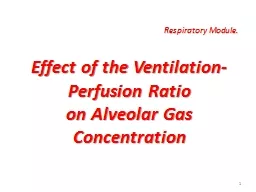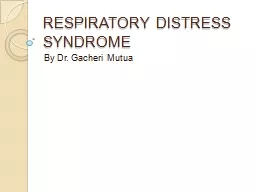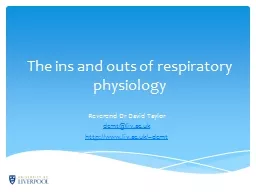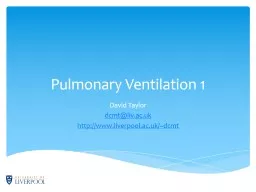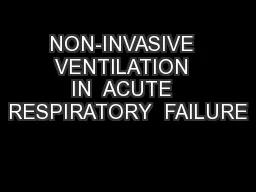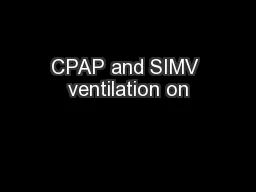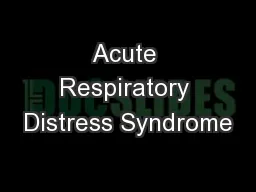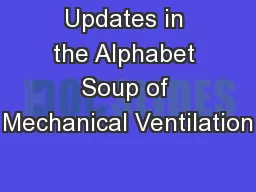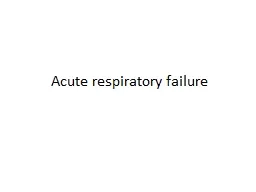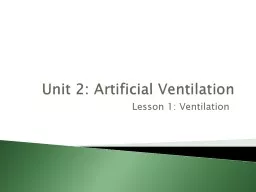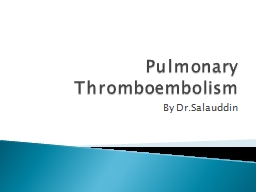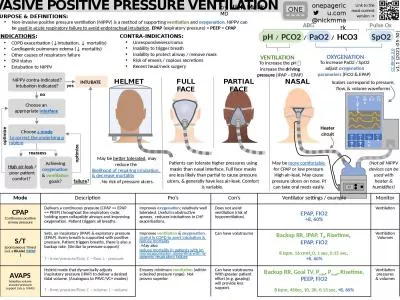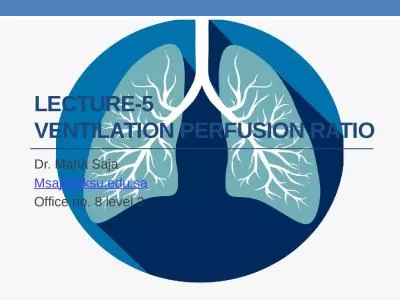PPT-Respiratory Module. Effect of the Ventilation-Perfusion Ratio
Author : KissableLips | Published Date : 2022-08-02
on Alveolar Gas Concentration 1 Dr Syed Mohammad Zub air MBBSKE BS PU DHA CCM FWHOUK MBAFACHE US MPHIL PHYSIOLOGY Assist Prof Physiology KING EDWARD MEDICAL UNIVERSITY
Presentation Embed Code
Download Presentation
Download Presentation The PPT/PDF document "Respiratory Module. Effect of the Ventil..." is the property of its rightful owner. Permission is granted to download and print the materials on this website for personal, non-commercial use only, and to display it on your personal computer provided you do not modify the materials and that you retain all copyright notices contained in the materials. By downloading content from our website, you accept the terms of this agreement.
Respiratory Module. Effect of the Ventilation-Perfusion Ratio: Transcript
Download Rules Of Document
"Respiratory Module. Effect of the Ventilation-Perfusion Ratio"The content belongs to its owner. You may download and print it for personal use, without modification, and keep all copyright notices. By downloading, you agree to these terms.
Related Documents

